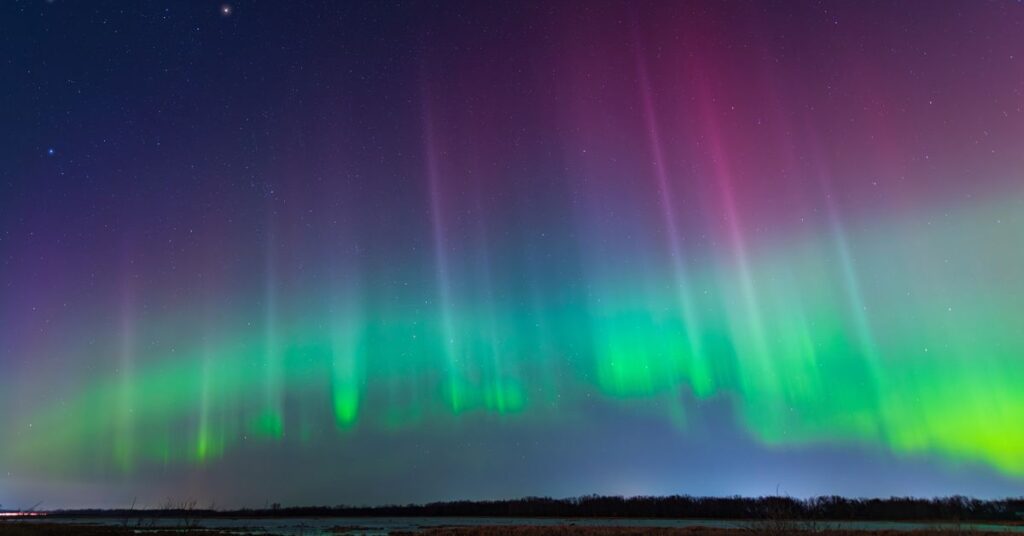
Australians who missed the mesmerizing display of the aurora australis last night will have one final opportunity to witness this celestial phenomenon tonight. The auroras were visible across vast stretches of the country, from Sydney and Perth to the Northern Territory and Tasmania, painting the night sky with vibrant hues of green and purple.
This widespread visibility is a rarity, as auroras typically do not extend over such large areas. Dr. Sarah Reeves, Space Sector Engagement Lead at the Bureau of Meteorology, described the recent auroras as “reasonably strong.” She noted, “To be able to see it from all of the different parts of the country that had sightings is reasonably unusual, not completely unheard of.”
Tonight’s Forecast and Viewing Opportunities
The US National Oceanic and Atmospheric Administration’s 30-minute aurora forecast predicts that the aurora will be visible again around sunset, between 8:00 PM and 8:30 PM. However, Dr. Rebecca Allen from the Swinburne Space Technology and Industry Institute cautioned that tonight might be the last chance for a while to catch a glimpse of this natural wonder. “These things build up over a few days, and then they release. So it’s probably be a bit of time before we would see auroras again,” she explained.
Dr. Allen suggested that those located further south of mid-Australia and along the east coast might have better chances of witnessing the auroras. However, the Bureau of Meteorology’s Space Weather Forecasting Centre expressed less optimism, stating that the likelihood of seeing the aurora is “small to unlikely.” Dr. Reeves added, “We think we’ve passed the peak of the geomagnetic activity now, and it’s a weakening trend, but certainly it’s something that we’re monitoring constantly.”
The Science Behind the Spectacle
Auroras do not need to be directly overhead to be seen; they can be visible up to 1000 kilometers away if conditions are favorable. The best viewing spots are locations with a clear horizon, such as beaches or bays. Tonight’s auroras are the result of a severe geomagnetic storm impacting Earth, triggered by three coronal mass ejections—solar flares—that sent charged particles interacting with Earth’s magnetic field.
“The last bit of that energy, energetic coronal mass ejection, has already reached Earth, so unless there’s another significant event that happens today, we wouldn’t expect there to be any more peak activity for a while,” Dr. Allen stated.
Implications of Solar Activity
The sun is currently at the peak of its 11-year solar cycle, which explains the increased aurora activity. Dr. Allen remarked, “That’s why we’re seeing so much aurora activity.” She highlighted the unprecedented frequency of aurora reports, setting a “new tone for what we expect” in the coming years. “We haven’t seen anything like this before,” she said. “What’s to say during the next solar cycle that there couldn’t even be more of these flares?”
As the solar cycle continues to peak, scientists and skywatchers alike remain vigilant, eager to witness and study these awe-inspiring displays of nature. Whether tonight’s aurora will be the last for some time remains uncertain, but it certainly offers a rare opportunity for Australians to experience the magic of the southern lights.






